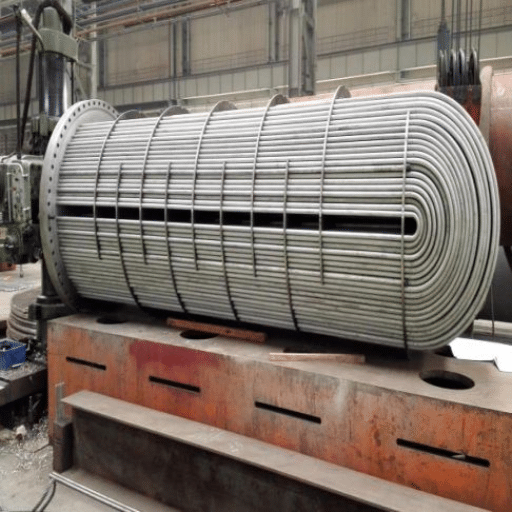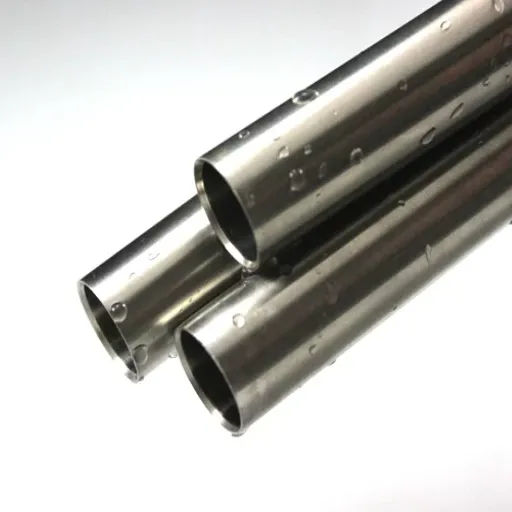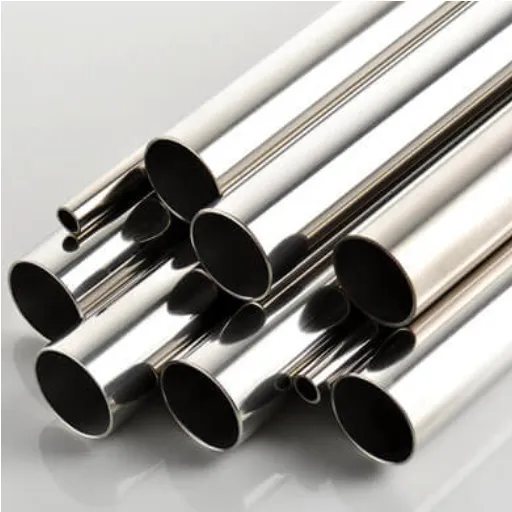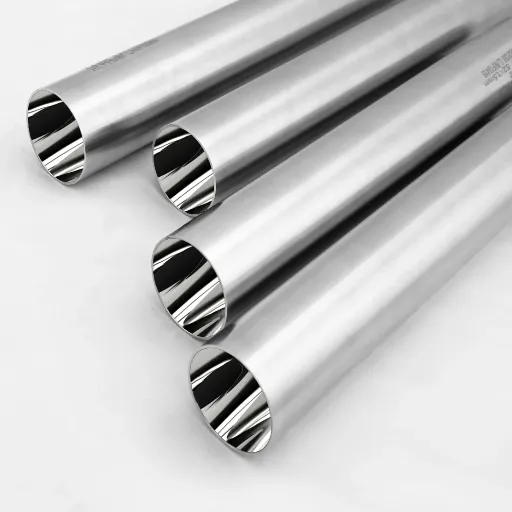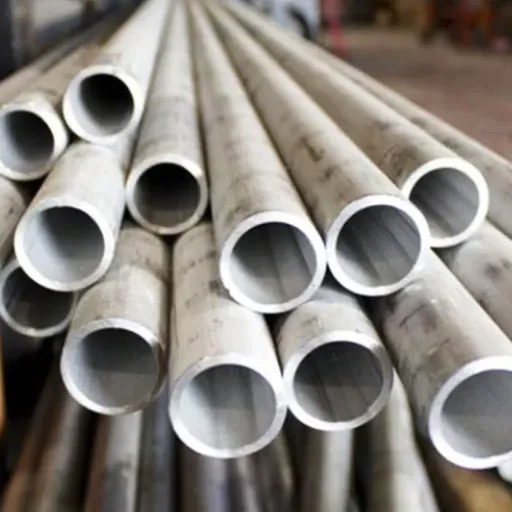Stainless steel is made famous because of its robustness, its modern look, and most of all, its superb resistance to both stains and corrosion; hence, it is one of the most preferred materials for kitchen appliances, cookware, and even industrial uses. Despite its name, however, stainless steel can still suffer from stains and corrosion (though to a much lesser extent). Poor and/or irregular maintenance, strong chemicals, and environmental conditions can result in occasional heavy marks that, in turn, affect the aesthetic and functional aspects of the material. This piece of writing goes deeply into the usual factors that cause staining and corrosion in stainless steel, pointing out the elements that could possibly shorten its life. Also, we will mention several efficient prevention methods and daily care guidelines that can make your stainless steel look immaculate. Whether you are a homeowner with professional-looking equipment or a professional, this comprehensive guide will give you the confidence to safeguard your investment and also keep this multi-purpose material’s durability intact.
Types of Stains on Stainless Steel

Stainless steel has a very good resistance to tarnishing and corrosion, but even so, under certain conditions, it can get stains that will unsafe its appearance and durability. Let’s take a look at the five most common types of stains on stainless steel.
Rust Stains
Rust can be formed if the stainless steel is in contact with high iron levels or if it is contaminated with iron particles coming from the outside. Even though stainless steel is made of chromium for corrosion resistance, it can still rust if poorly maintained or exposed to extreme environments.
Water Spots
These are the remaining minerals after the water evaporates that cause the staining. The hard water that has a lot of calcium and magnesium can also be a factor in the formation of water spots, which will make the surface look dirty or dull.
Heat Tint Oxidation
High heat can lead to discoloration of the stainless steel that appears in the form of blue, yellow, or brown tints. This is often the case in the industrial field or with cookware that is exposed to too much heat without proper cooling.
Fingerprints and Smudges
Usually a non-issue but rather a cosmetic one, fingerprints and oil smudges depend on the degree of human handling. The skin’s natural oils can get onto the surface of the stainless steel, especially if it is polished, thus reducing its shine.
Chemical Staining
Strong chemicals like bleach or chloride-based cleaners can discolor or even pit the stainless steel. Gradually, the exposure to such substances may lead to the loss of the material’s corrosion resistance and, consequently, unsightly marks or area damage.
Knowing these types of stains will aid in diagnosing and spotting issues that are going to arise, thus preventing the integrity of the stainless steel from being compromised.
Common Stains from Cooking and Food
Stainless steel surfaces in kitchens are often subjected to a range of substances associated with cooking and food that can lead to permanent marks if not cleaned thoroughly. Below is a list of five main types of stains, their traits being described, associated with cooking and food:
Oil and Grease Residue
Fried food or cooking with oils usually causes a constant mess which in turn leaves a sticky coating on the stainless steel. If this is not removed in time, it can eventually dull the surface.
Burnt-On Stains
Cooking at high temperatures can make the food particles get burnt and stick to the surface thus creating dark and ugly marks which are hard to clean up.
Hard Water Spots
The evaporation of hard water can cause white or gray spots on the stainless steel surfaces, especially if they are not cleaned off, because hard water has a high mineral content.
Acidic Food Corrosion
Tomato sauce, citrus juices, or vinegar are among the food items that can discolor stainless steel because their acidity may penetrate the protective layer of the stainless steel.
Salt Deposits
Long contact with stainless steel can lead to pitting from residual salt, including brines or seasoning, which can subsequently cause localized corrosion over time.
Recognizing these typical stains and using the right cleaning methods will help prolong both the life and the beauty of your stainless steel surfaces.
Chemical Stains and Their Effects
The chemical stains that appear on the surface of stainless steel will be quite different depending on the material they have been in contact with. The stainless steel surface will not only lose its shiny appearance but the quality of the material may be affected as well if the problem is not solved in time. A detailed list of chemical stains along with their effects is given below:
Acid Etching
When acid comes in contact with stainless steel, it will produce etching that results in dull or matte spots on the surface. These spots can be very hard to restore and are usually the reason for the non-uniformity of the stainless steel.
Bleach Corrosion
The interaction of bleach or chlorine with the surface of stainless steel can lead to corrosion and finally rusting since these chemicals are notorious for breaking the protective chromium oxide layer of stainless steel.
Oxidation Stains
Just like oxidation in metals, high-temperature exposure or contact with strong oxidizers may lead to discoloration and oxidation that forms a rainbow-like effect or darker line tracks.
Hard Water Stains
The elements contained in hard water such as calcium and magnesium are responsible for leaving behind the white chalky stains that take quite a long time to disappear and thus specialized cleaning solutions will be needed.
Alkaline Damage
When very strong alkaline cleaners are used, the protective layer of the stainless steel surface will be removed leading to dullness and increasing susceptibility to corrosion even under mild conditions.
Cleaning methods that are effective in getting rid of these stains at an early stage should be employed, so that aesthetically the stainless steel will be bright and shiny, and its strength will not be compromised. Non-abrasive cleaners and rinse aids are among the means that help in reducing these effects.
Rust and Iron Contamination
Rust and iron contamination are regular problems that can compromise the longevity and beauty of stainless steel. Usually, these issues are from external sources of iron or poor handling during manufacturing and usage. Below are five reasons of rust and iron contamination explained in detail:
Tool and Equipment Contact
Use of carbon steel tools or improper handling with iron equipment can introduce iron particles to stain steel surfaces which would then trigger rust formation.
Environmental Exposure
Stainless steel may still rust under its protective layer due to prolonged exposure to saltwater, chlorides, and industrial pollutants, which can create localized corrosion.
Welding Contaminants
Welding operations without the right precautions may push iron particles deep into the stainless steel or cause the passive layer to be destroyed, which facilitates rusting.
Cross-Contamination
When the stainless steel is mixed with non-stainless steel during storage or transport the transfer of rust-causing particles or remaining contaminants can occur.
Improper Cleaning Practices
Cleaning with non-stainless steel wool or abrasive brushes may leave iron residues, which will then react with moisture and result in the formation of corrosion spots.
It is necessary to maintain the integrity of stainless steel surfaces by adopting cleaning protocols, proper handling, and regular maintenance to tackle these contamination problems.
Understanding the Causes of Discoloration
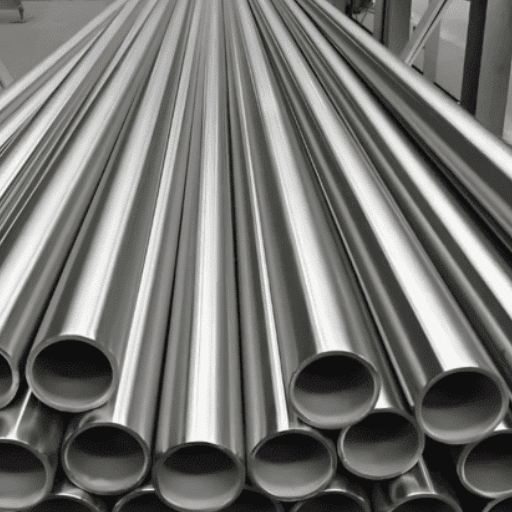
Discoloration on stainless steel is a common problem that can be attributed to different factors. The resistance to corrosion and the long-lasting nature of stainless steel are often neglected in some cases where its surface cannot withstand the environmental and handling conditions. Below is a list of the five main reasons for the discoloration.
Heat Exposure
Oxidation is the result of high temperatures, and one of the main signs of the process is the discoloration showing yellow, blue, or brown tints. This is frequently observed in machines that are heated during the processes of welding or cleaning with high temperatures.
Chemical Exposure
Strong acids or alkalis, as well as strong chemicals in general, can cause the malfunctioning of the Chromium oxide layer that protects the stainless steel, leading to staining or discoloration. These effects are mainly seen in locations with high chloride concentration.
Moisture Retention
Marks on the surface or loss of gloss are the consequences of long exposure to moisture. This is typical in places with poor ventilation or high humidity. Watermarks and mineral deposits are the common result of this factor.
Organic Residues
Stainless steel may get discolored due to the presence of food particles, grease, and other organic materials on its surface. The discolored stainless steel is usually a result of prolonged exposure to both heat and moisture.
Surface Abrasion
Abrasive cleaning methods, e.g., steel wool and coarse brushes, can cause stainless steel to lose its shine apart from the cracks or scratches that they create. The scratches might trap the moisture and the dust leading to the yellowing of the surface.
Addressing the causes and the circumstances leading to discoloration helps in determining and proper cleaning, maintenance, and handling techniques, which are very important for the preservation of stainless steel surfaces both in terms of appearance and functionality.
Heat Tint and Its Impact
Heat tint refers to the discoloration of a stainless steel surface that is caused by high temperatures and it is a process that usually accompanies stainless steel welding or heat treatment. At the same time, heat tint presence has a number of effects on the material. The main impacts of heat tint on stainless steel are as follows:
1. Reduced Corrosion Resistance
The oxide layer that forms as a result of heat tint may break down the protective chromium oxide layer thus making the stainless steel more vulnerable to corrosion in certain locations.
2. Altered Appearance
Heat tint can give rise to uneven color distributions, which will not only reduce the aesthetic quality but also the uniformity of the stainless steel surface.
3. Surface Contamination
The discolored parts of the surface could be the places for the adhesion of dirt or moisture which would likely be a reason for speeding up the corrosion process if they were not removed.
4. Weakened Structural Properties
Continuous heating to the point of causing heat tint can have a negative effect on the tensile strength and mechanical durability of stainless steel.
5. Required Additional Treatment
Heat-tinted surfaces usually need cleaning, polishing, or passivation to bring back the material to its best condition. Thus, maintenance costs and efforts are increased.
Environmental Factors Leading to Staining
Stainless steel surfaces are vulnerable to environmental factors that lead to staining, and thus, their aesthetics and performance may be affected. These are the common causes in detail:
High Humidity Levels
With prolonged exposure to wet conditions, moisture may form in the shape of water droplets, which, in turn, will carry impurities and minerals. Eventually, these will lead to discolored or stained areas on the steel surface.
Salt Exposure
Stainless steel surfaces in areas near oceans or those that use de-icing have become very common since they are constantly covered with corrosive soil. Often they get pitted or stained.
Airborne Pollutants
Metals like sulfur, carbon dioxide, or industrial fumes get settled on stainless steel and chemically react to moisture turning the metals into a corrosive film that causes staining.
Temperature Fluctuations
Temperature variations can lead to condensation on stainless steel. The alternating condensation and evaporation of water droplets can transport contaminants or create staining patterns over time.
Improper Maintenance or Cleaning
The use of wrong cleaning agents, insufficient rinsing, and cleaning the surface infrequently can leave residues that lead to oxidation and staining.
How Rust Forms on Stainless Steel
The occurrence of rust on stainless steel is very rare by virtue of its nature. However, this is not to say that it cannot happen at all, for there are specific conditions under which it may occur. Below, we will touch on five factors that play a major role in the development of rust on stainless steel surfaces:
Exposure to Chlorides
Stainless steel becomes especially susceptible to this kind of corrosion known as pitting when it is subjected to environments where chlorides are present in large quantities (for example, saltwater). The oxides of chlorine attack the protective oxide layer and gradually cause rust to form.
Mechanical Damage
That being said, any type of mechanical abrasion on a stainless steel surface may make it more prone to rusting. The exposed area is more reactive and therefore attracts the oxidizing agents easily, which can eventually lead to rust.
Low Oxygen Environments
The passive layer of stainless steel gets reinforced in the presence of oxygen; hence, it gets weaker in a low-oxygen environment. Such enclosed or low-oxygen areas would cause the self-healing process of the passive layer of stainless steel to be slowed down, thus making such surfaces more susceptible to rust.
Chemical/Airborne Pollutants
Chemicals that are either directly or indirectly related to air pollution, acid rain, or even the use of strong acids in cleaning can cause contaminants to build up on the surfaces of stainless steel. These pollutants foster both the blocking of one spot through corrosion and rusting.
Prolonged Exposure to Moisture
The oxide layer, which usually provides the surface with protection against corrosion, cannot be reformed if the surface is constantly wet or humid. This continuous water exposure can speed up the rusting process in the areas that lack drainage or ventilation, especially.
Effective Cleaning Methods for Stainless Steel

Choosing the appropriate cleaning techniques is important to keep stainless steel’s integrity and look. Below are five ways, from which one can select the best method depending on the degree of cleanliness needed:
Warm Water and Mild Detergent
Begin with a combination of warm water and a mild detergent. The dirt, fingerprints, and light grease can be pulled off with this gentle method most of the time. A soft cloth or sponge should be used to prevent scratches on the surface, and the area should be rinsed carefully with clean water before drying.
White Vinegar and Baking Soda
A combination of white vinegar and baking soda can be very helpful in eliminating very tough stains. With its mild acidic nature, vinegar helps break up the dirt, and baking soda serves as a gentle abrasive to lift the hard-to-reach spots without harming the surface.
Specialized Stainless Steel Cleaners
A commercial stainless steel cleaner helps restore the shine very well and gets rid of even the deepest blemishes. These products are specially designed to take care of the steel’s surface while getting rid of impurities, grease, and water spots.
Microfiber Cloth Polishing
Stainless steel surfaces can be kept shiny by regularly polishing them with a dry microfiber cloth. Professional cleaning is good for everyday maintenance, and it won’t leave any scratch or damage on the steel.
Rubbing Alcohol for Streak Removal
For streak-free results, rubbing alcohol can be applied to stainless steel with a soft cloth. It evaporates rapidly, leaving the surface clean and shiny without any residue. This is a powerful method for high-touch or frequently used places.
Cleanliness of your stainless steel surfaces will enhance their corrosion resistance, and thus, will keep the steel undegradable, attractive, and resistant to corrosion for many years just by incorporating the above-mentioned cleaning methods into your routine.
Using Dish Soap and Water
Using dish soap and water is one of the cleaning methods for stainless steel surfaces, although it is the simplest and most effective one. This method, besides being easy and accessible, is also gentle and very good for the daily cleaning of the surfaces. Below are the steps and tips for using dish soap and water effectively:
Prepare the Solution
First, you need to mix a few drops of mild dish soap with warm water in a bowl or bucket. Do not use harsh detergents since they can slowly damage the stainless steel finish.
Use a Soft Cloth or Sponge
The next step is to dip a soft microfiber cloth or non-abrasive sponge into the soapy water. Using steel wool or rough scrubbers is a no-no, as these could leave scratches on the surface.
Clean Along the Grain
The golden rule is to always wipe or scrub in accordance with the stainless steel’s grain. This not only prevents streaks but also guarantees a cleaner and polished look.
Rinse Thoroughly
Then, take a separate clean cloth that is slightly wet with plain water rinsed off and use it to wipe away any soap residue, as lingering soap can dull the finish.
Dry and Buff
Lastly, absorb the water on the surface instantly with a clean, dry towel in order to avoid water spots. If you want to add more shine, then buff the steel very gently with a microfiber cloth.
Adhering to these comprehensive steps will allow you not only to clean but also maintain the stainless steel surfaces to the same high standard without using any harsh chemicals.
Specialized Cleaners for Chemical Stains
Whenever we talk about stubborn chemical stains on stainless steel, professional cleaners made for that specific purpose might give you the answer. Stains that are hard to remove are the only concern for these types of cleaners, as they are not going to harm the surface underneath. Here, we have five highly recommended options:
Bar Keepers Friend
Rugged and versatile cleaner that successfully eliminates chemical stains, rust, and oxidation. It won’t harm stainless steel and will also give it a smooth, polished surface.
Weiman Stainless Steel Cleaner and Polish
This product is a stain remover, and at the same time, it offers a shine-restoring effect and the prevention of future stains through the application of a protective coating.
Therapy Stainless Steel Cleaner & Polish
An eco-friendly cleaner made from plant-based materials that overcomes dirt and chemical residues while providing a streak-free finish.
ZEP Stainless Steel Cleaner
ZEP is an effective solution to tough industrial cleaning you can eliminate stains and fingerprints caused by chemicals. ZEP is perfect for high-usage surfaces.
3M Stainless Steel Cleaner and Polish
This one is credited with its effectiveness in cleaning discoloured and stained areas plus its ability to leave a protective sheen on the surface.
If used following the instructions given, these cleaners will help you win the battle against even the toughest stains, thus your stainless steel surfaces will still look perfect and last long.
Polishing Techniques to Restore Shine
Proper methods are necessary for restoring the gleam of your stainless steel surfaces and getting a polished and streak-free appearance. Below are five techniques that are very effective in polishing to be seen.
Microfiber Cloth Buffing
A good-quality microfiber cloth can be used to buff the surface with a light touch going along the grain. Microfiber is capable of getting rid of smudges, fingerprints, and small scratches created on the surface without, however, damaging or scratching it.
Olive Oil Application
Put a little bit of olive oil on a piece of cloth and then rub it on the surfaces. It is not only the method that brings back the shine but also the protection from the dirt and the dust that will be easier to clean off because they won’t stick.
Baking Soda Paste
To do that, hot water and baking soda need to be mixed together to form a paste, which will then be applied to the offending spots or stains. The step must be followed by rinsing and drying, preferably with a soft cloth, to bring back the luster.
Vinegar and Water Solution
Mix up equal portions of vinegar with water in a spray bottle. The surface should be lightly covered with the liquid and then wiped with a soft cloth to remove streaks and to give a better shine.
Commercial Stainless Steel Polish
To get the best results, consider purchasing a high-end polish for stainless steel that is specifically formulated to achieve professional results. The application of the product should be followed by buffing with a soft cloth for the creation of a lasting brilliance.
Make these five techniques part of your routine with the right amount of care, and your stainless steel surfaces will always be shiny and elegant for years to come.
Preventing Stains and Corrosion
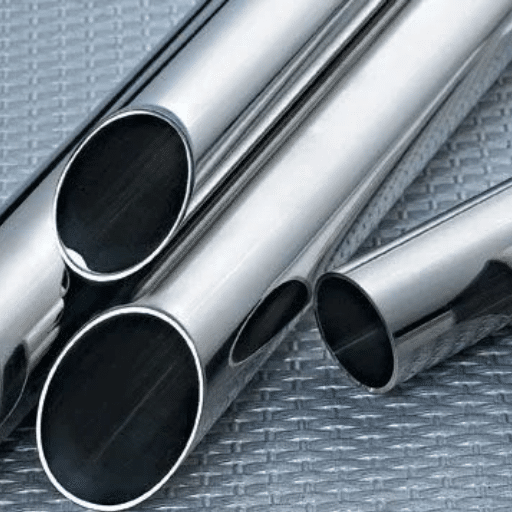
To stop stains and rust from forming on stainless steel surfaces, it is necessary to carry out routine maintenance and to use the material thoughtfully. Here are five methods that work the best to make stainless steel last longer and stay in good shape:
Dry Surfaces After Cleaning
Water spots or mineral deposits can eventually lead to stains. Properly wiping the stainless steel surface with a soft and absorbent cloth immediately after cleaning helps prevent water sit on the surface.
Avoid Abrasive Cleaners
Abrasive cleaning agents could harm the stainless steel surface and thus its corrosion resistance. That is why, instead of using abrasive, pH-neutral cleaners that are made for stainless steel, one might damage the surface by selecting the wrong option.
Protect Against Chlorine and Salt
Corrosion from rust or powder, especially in places with a coastal or humid climate, could be quickened by the chlorine or salt exposure. If surfaces get in contact with those elements, thoroughly rinse and wipe down.
Use Protective Wax or Coatings
The application of a stainless-steel protective coating or wax will give you a barrier that not only keeps the moisture away but also the contaminants. This extra layer will help in avoiding both stains as well as long-term corrosio,n especially on outdoor surfaces.
Regular Inspections and Maintenance
Carry out stainless steel surface inspections from time to time for early detection of blemishes or corrosion. Early treatment of small stains or marks can stop the deterioration of the material and maintain its strength in the long run.
Tips to Protect Stainless Steel from Rust
Use Proper Cleaning Agents
Always make use of non-abrasive cleaners for stainless steel cleaning and these include mild soap and water as well as specialized stainless steel cleaning solutions. Bleach or chlorine are drastic chemicals which will lead to pitting and corrosion and thus should not be used. Regular cleaning gets rid of dirt, grease, and contaminants which could rust the steel faster.
Apply a Protective Coating
Coat the stainless steel with a protective coating of your choice, wax, or oil-based spray. This will act as a barrier that keeps water and environmental pollutants away. For outdoor stainless steel that gets the full brunt of harsh weather, these coatings can really prolong the steel’s life.
Control Exposure to Moisture
Reduce the exposure time to water or high humidity places to the minimum. After cleaning or getting wet from rain, wipe the surfaces dry. Using dehumidifiers or proper ventilation in closed spaces can help to bring down the moisture levels which support the process of metal corrosion.
Avoid Cross-Contamination
During handling or manufacturing, do not let the tools or materials with iron transfer particles to the stainless steel surface. These particles can stick to stainless steel and form small rust deposits. Use only stainless steel-compatible tools for cleaning or processing.
Perform Routine Inspections
Inspect your stainless steel surfaces frequently to spot scratches, blemishes, or the very beginning of rust spots. Clean the area and apply the protective coating as needed in a timely manner to prevent the problem from becoming bigger. Sticking to a regular inspection plan helps the material keep its corrosion-resistant property throughout its lifetime.
Proper Maintenance of Cookware
Season Your Cookware
If you have cast iron or carbon steel cookware, then seasoning is a must to keep the non-stick surface and to stop rust from forming. Spread a very thin layer of cooking oil and then heat the cookware so that the oil adheres to the surface. For maximum efficiency, this process should be done at regular intervals.
Avoid Abrasive Cleaners
Clean your cookware with gentle dish soap and non-abrasive sponges or cloths only. The use of abrasive cleaners or steel wool will chips off the protective coatings resulting in the early demise of your pots and pans.
Dry Thoroughly to Prevent Rust
Drying should be done thoroughly for all the cookware after washing before storing. Rust may form if moisture is left on the surface, especially with cast iron or carbon steel.
Store Properly
Make use of protective padding or hang your cookware to avoid scratches and dents. Stacking without protection may lead to surface damage, thus affecting the cooking performance over time.
Follow Manufacturer Guidelines
Different cookware materials require different care. Always read and follow the manufacturer’s instructions regarding heat levels, cleaning methods, and compatibility with dishwashers to maintain the integrity of your cookware.
Long-term Care Strategies for Stainless Steel
Clean Thoroughly After Each Use
For the beautiful and functional maintenance of stainless steel, it should be cleaned right after the cooking process. If left unwashable, the residue from acidic or salty foods might cause pitting over time. To have the best results, use warm water, mild soap, and a soft sponge.
Avoid Abrasive Cleaning Tools
Abrasive cleaning tools are the ones that include steel wool or abrasive pads and can make scratches on the surface of the stainless steel. Such tools should not be used; instead, go for non-abrasive sponges or microfiber cloths to protect the finish and avoid making any damage.
Remove Stains and Water Spots Promptly
When the stains or water spots appear the way to deal with them is mixing vinegar and water or putting a little bit of baking soda activated with water onto the spot you are addressing. After that, rinse well and use a soft cloth to dry in order to make the shine appear again.
Polish Regularly
Stainless steel polish can eradicate small scratches and keep your cookware and appliances’ brilliance. The polish is to be applied as per the instructions; it must align with the wood grain of the steel to have the best effect.
Store Properly in a Dry Environment
Moisture will discolour or corrode stainless steel if it is not kept dry before being stored. Henceforth, always make sure that your stainless steel pots and pans or tools are absolutely dry, and put them away in a cold, dry area that is not prone to moisture for long-lasting.
Frequently Asked Questions
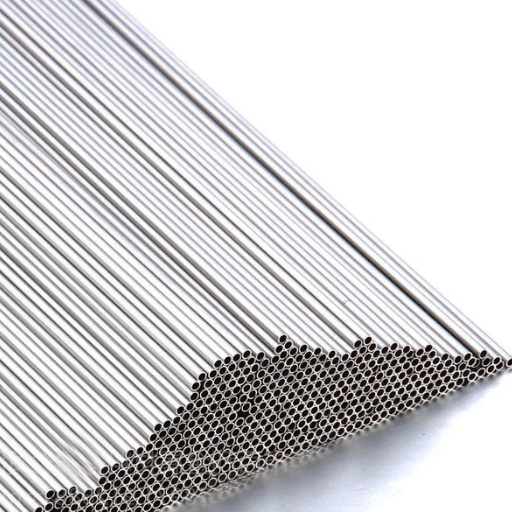
Q: How can I remove minor scratches from my stainless steel cookware or appliances?
A: I recommend using a stainless steel polish and applying it as directed, making sure to follow the grain of the steel. This helps minimize scratches and restores the shine.
Q: What’s the best way to prevent discoloration or corrosion on stainless steel?
A: To avoid discoloration or corrosion, always dry your stainless steel completely after cleaning and store it in a cool, dry place away from humidity.
How to Identify Different Types of Stains?
In order to differentiate stains on stainless steel, it is advisable that you start with the assessment of their characteristics and their ubicación. Hard Water, not just the gaseous form, sometimes leaves traces on the non-porous surface of the steel; these are usually quite visible as white spots or streaks which come from the minerals. Usually, such stains can be cleaned with the vinegar-water solution. Different than that the greasy stains, they might not show and they will leave a shining spot on the surface when touched; the best way to deal with this is with using mild detergent and warm water. The hard water spots eventually turn into rust and the reddish-brown spots indicates that the stainless steel has been subjected to high humidity or corrosive elements for a long time; a steel cleaner or a paste of baking soda and water can effectively get rid of such stains. Another problem, fingerprints, which are very common and can be easily identified by the smudged oily pattern, can be easily removed by using a soft cloth and stainless steel polish. Knowing the unique characteristics of each stain is the main factor in the selection of cleaning methods and in preserving the integrity of the stainless steel surfaces in your home.
Can All Stains Be Removed?
In the case of stainless steel, many stains can be easily treated by employing the right cleaning methods and using suitable tools, while some deeply stuck-in or very old stains might still be a problem. Stains that originate from very strong chemical exposure or complete disregard for the surface may eventually cause discoloration or very slight damage that cannot be reversed entirely, as per the recent observations. Nevertheless, regular cleaning and the application of stainless steel-specific cleaning agents can prevent and even alleviate such problems. It is, therefore, important to take immediate action as soon as a stain is noticed since quick treatment will result in a significantly higher chance of the stain being totally removed.
Is Stainless Steel Completely Rust-Proof?
Stainless steel, although very resistant to corrosion, cannot be considered completely rust-free. Its exceptional resistance to corrosion is due to the alloying element chromium, which forms an oxide layer on the surface that resembles a shield. Nevertheless, under specific situations like constant contact with seawater, strong acids, or highly humid air, this protective layer may get weak and, consequently, rust or corrosion may occur. A recent study indicates that even the best quality stainless steel alloys can still be subjected to slight rusting if neglected. Contaminants like abrasion, chemical attack, or lack of cleaning can make the material more vulnerable to rusting. Cleaning regularly and implementing safeguards will greatly improve the life span of stainless steel, together with its ability to resist rusting.
References
- Studies Related to Microbially Induced Corrosion of Stainless Steel
This study explores how surface roughness and bacterial colonization can contribute to staining and corrosion in stainless steel.
Read more - Cleaning and Sanitizing Winery Equipment: A Review
This review highlights how stainless steel can stain, discolor, or accumulate grime during regular use in the winery industry.
Read more - Remove Stains From Iron, Rust | UGA FACS
This guide provides insights into removing stains from various materials, including stainless steel, and discusses factors that cause staining.
Read more
Frequently Asked Questions (FAQ)
What can stain stainless steel surfaces?
Stainless steel can be stained by various substances, including food residues, chemicals, and environmental factors. Common culprits include acidic foods like tomatoes and citrus, as well as salt and chloride compounds. Over time, these can lead to discoloration and even corrosion if not properly cleaned.
How does rust form on stainless steel?
Despite its name, stainless steel can rust if it is exposed to moisture, oxygen, and chlorides, particularly if there is a failure in the chromium oxide layer. This layer provides corrosion resistance, but if damaged or compromised, the underlying steel can corrode and develop rust.
What are effective cleaning methods for stainless steel cookware?
To clean stainless steel cookware, use non-abrasive cleaners and soft cloths or sponges. Products like Bar Keepers Friend can help remove tough stains without scratching the surface. For daily cleaning, a mixture of dish soap and warm water is often effective. Avoid using steel wool, as it can scratch and damage the stainless steel surface.
Can chemical stains be removed from stainless steel?
Chemical stains can often be removed using specific stainless steel cleaners designed to neutralize the chemicals without damaging the surface. An acid-based cleaner may be required for tough stains, but always test on an inconspicuous area first to ensure it doesn’t cause further discoloration.
How to protect stainless steel from rust?
To protect stainless steel from rust, maintain a clean surface free from food particles and moisture. Regularly apply a protective coating or polish designed for stainless steel to enhance its corrosion resistance. Additionally, avoid exposure to harsh chemicals and ensure proper ventilation in areas where stainless steel is used.
Does heat tint affect stainless steel?
Yes, heat tint can discolor stainless steel, particularly around welded areas where high temperatures have altered the oxide layer. To remove heat tint, gently scrub the affected area with a non-abrasive cleaner and a soft cloth, and consider reapplying a protective coating afterward to restore the surface.
What is the misconception that stainless steel can’t stain?
A common misconception is that stainless steel is completely stain-proof. While it is more resistant to staining than regular steel due to its chromium content, it is still susceptible to staining, rust, and corrosion under certain conditions, such as exposure to harsh chemicals or prolonged moisture.
How can I remove stubborn stains from stainless steel?
Stubborn stains can be effectively removed using a paste made from baking soda and water. Apply the paste to the stain and let it sit for a few minutes before gently scrubbing with a soft cloth in the direction of the grain. For tougher stains, a diluted solution of white vinegar or lemon juice can also be effective.
What should I avoid when cleaning stainless steel?
When cleaning stainless steel, avoid using abrasive cleaners, steel wool, or acidic substances like bleach and hydrochloric acid, as these can scratch the surface or cause further discoloration. Always opt for non-abrasive, pH-balanced cleaning products to maintain the integrity of the stainless steel surface.

